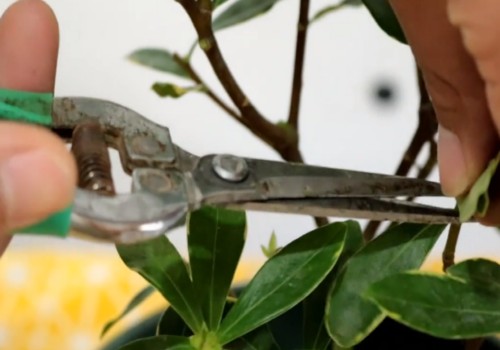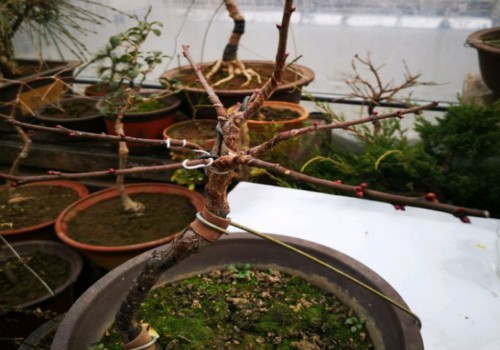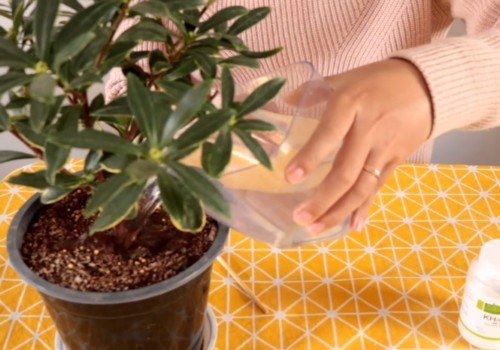How to maintain after flowering
Daphne odorifera is a kind of beautiful and fragrant flower plant, which is deeply loved by the public because of its high ornamental value, and is usually planted as a family pot. However, if we want Ruixiang potted plants to grow well and blossom well, we need to do a good job in maintenance and management, especially if we want to restore its growth quickly after flowering, so as to lay a good foundation for flowering in the coming year.

The post-anthesis management of Ruixiang is very important. If we want to raise Ruixiang well, post-anthesis care should be a key point. So, how should we maintain Ruixiang after completing a round of flowering? That is, how to maintain after the florescence of Ruixiang?
The post-anthesis management of Ruixiang is very important, and we must not ignore it, because if we manage it well, there will be another round of flowers next spring. But after the first round of flowering, we need to strengthen the conservation of potted plants. So, how to maintain Ruixiang after its flowering period?
When the Ruixiang flower fails, we can count two leaves down from the bottom of the flower, and then cut off the residual flower and the two leaves below it. Of course, there may be some small flowers still blooming on the potted plant, and there is no need to keep them at this time, so you need to cut them off as well, until all the residual flowers and even the flowers that are still in bloom are cut off.
Through post-anthesis pruning, a lot of nutrients can be saved and nutrients can be supplied more centrally to the plant, which can promote the rapid recovery of plant growth. After all, the plant consumes a lot of nutrients at flowering stage, and its growth is slow and weak. There is an urgent need to increase nutrients to promote its recovery and pull out new lateral branches. Cutting off the residual flowers is an effective way to save nutrient consumption.
However, the nutrients saved by pruning after anthesis alone are not enough to restore the plant growth quickly, and topdressing in time is needed to replenish more nutrients. Therefore, usually after pruning the potted Daphne, we can apply a little more balanced compound fertilizer of nitrogen, phosphorus and potassium.
However, the concentration of fertilization must be well controlled, the amount of fertilizer must not be too much, no large fertilizer, let alone thick fertilizer. Usually a spoonful of fertilizer is applied to a flowerpot to achieve the effect of topdressing. The fertilizer can also be sprinkled directly and evenly on the surface of the basin soil, and then watered thoroughly. In this way, under the action of watering, the nutrients in the fertilizer will seep into the soil for the root system of Daphne to absorb.
After a period of maintenance, especially when the temperature becomes relatively stable in early March in spring, I can apply compound fertilizer for it again. Of course, in order to make it blossom in spring, we also need to combine topdressing with phosphorus and potassium fertilizer, which is more conducive to flower bud differentiation of Ruixiang, and then let it blossom smoothly.
After flowering, if we can do a good job of pruning and fertilizer and water management, Ruixiang can bloom a new round of flowers when spring blossoms next year. However, even if we do not conserve Daphne for the purpose of blooming in spring, it is necessary to prune and fertilize after flowering, because it is very important for plants to return to growth quickly.
Time: 2019-05-27 Click:
- Prev

What if plum blossoms only have buds that do not blossom or blossom less?
Plum blossoms are not only brilliant and fragrant, but also have a positive temperament, which can bring people full of positive energy. However, if plum blossoms only grow buds but do not blossom, or even very few blossoms, it must be a bad growth state. So, what if the plum blossoms only have buds that do not blossom or blossom less?
- Next

How to maintain Ruixiang in Phnom Penh during pregnancy in winter
Phnom Penh Daphne is a very easy to raise flowering plant, not only high ornamental value, but also very rich fragrance, and it also likes the semi-shady growth environment, so it is more appropriate to put it as a family potted plant indoors for maintenance. it can not only make the room full of fragrance, but also we can watch the flowers.
Related
- Fuxing push coffee new agricultural production and marketing class: lack of small-scale processing plants
- Jujube rice field leisure farm deep ploughing Yilan for five years to create a space for organic food and play
- Nongyu Farm-A trial of organic papaya for brave women with advanced technology
- Four points for attention in the prevention and control of diseases and insect pests of edible fungi
- How to add nutrient solution to Edible Fungi
- Is there any good way to control edible fungus mites?
- Open Inoculation Technology of Edible Fungi
- Is there any clever way to use fertilizer for edible fungus in winter?
- What agents are used to kill the pathogens of edible fungi in the mushroom shed?
- Rapid drying of Edible Fungi

